Home> Technical Articles> Indexing Roller Units: Precision in Motion Control
- AddressNo.1875 East Changjiang Road, New District, Wuxi, Jiangsu,China
- Factory AddressNo.1875 East Changjiang Road, New District, Wuxi, Jiangsu, China
- Worktime9:00-18:00
- Phone(Working Time)86-510-85310167
Indexing roller units are essential components in motion control applications, playing a pivotal role in ensuring precision and reliability.
Understanding Indexing Roller Units
Indexing roller units are specialized components designed to facilitate precise positioning and rotational movement in mechanical systems. These units are employed in motion control applications to achieve accurate and repeatable positioning, making them integral to industries that rely on precision and reliability.
The Role of Indexing Roller Units
In motion control applications, indexing roller units provide the means to control and adjust the position of components or machinery accurately. These units enable the precise movement of equipment, ensuring that tasks are carried out with minimal error. Whether it's in manufacturing, automation, or robotics, indexing roller units are at the heart of precise motion control.
Importance Across Industries
The significance of indexing roller units extends across various industries. From manufacturing and assembly lines to robotics and aerospace, these units are instrumental in achieving precision, accuracy, and efficiency. As technology advances and industries demand more precise motion control, the role of indexing roller units becomes increasingly vital.
Precision and Reliability
One of the primary characteristics of indexing roller units is their ability to deliver precision and reliability. These units are engineered with meticulous attention to detail, ensuring that they can handle demanding tasks with utmost accuracy. As a result, they contribute significantly to the overall efficiency of motion control systems.

Structure and Functionality
To truly understand the capabilities and significance of indexing roller units in motion control applications, it's crucial to delve into their intricate structure and functionality.
|
Design and Construction |
Indexing roller units are engineered with precision and attention to detail to ensure their optimal performance. These units consist of several essential components that work in harmony to facilitate precise rotational movements and positioning. |
|
Housing |
The housing of indexing roller units serves as the outer shell, providing protection and support to the internal components. It is typically made from durable materials such as steel, aluminum, or plastic, depending on the specific application requirements. |
|
Rollers |
The rollers are the primary load-bearing elements within indexing roller units. These cylindrical components are responsible for contact with the rotating surface, enabling smooth movement and precise indexing. Rollers are often made from high-quality materials like bearing steel to ensure longevity and minimal wear. |
|
Bearings |
High-precision bearings are integrated into indexing roller units to minimize friction and enable smooth rotation. These bearings play a crucial role in achieving the desired precision and reliability in motion control applications. Common types of bearings used include ball bearings and cylindrical roller bearings. |
|
Drive Mechanism |
Indexing roller units incorporate various drive mechanisms, such as gears, belts, or direct-drive systems, depending on the application's requirements. These mechanisms ensure that rotational movement is controlled and accurate.
|
Handling Rotational Movements
One of the key functions of indexing roller units is their ability to handle rotational movements with precision. This capability is essential in applications where controlled angular adjustments or rotations are required. Whether it's in conveyor systems, indexing tables, or robotics, indexing roller units excel at ensuring precise angular positioning.
Enabling Precise Positioning
In motion control applications, achieving precise positioning is often a critical requirement. Indexing roller units excel in this regard by providing the means to position components or machinery with utmost accuracy. Their inherent design and construction allow for repeatable and dependable positioning, making them indispensable in industries that rely on precision.
Critical Components for Functionality
The functionality of indexing roller units relies on several critical components, including the quality of the bearings, the precision of the rollers, and the efficiency of the drive mechanism. These components must work seamlessly together to ensure optimal performance, reliability, and longevity.
Applications and Industries
Indexing roller units have established themselves as indispensable components in motion control applications, catering to a wide range of industries and providing precise control in various mechanical systems. This section will shed light on the diverse industries and applications where indexing roller units play a pivotal role in ensuring precision and control.
Industries Utilizing Indexing Roller Units
Manufacturing and Automation
In the realm of manufacturing and automation, indexing roller units are extensively used to achieve precise and controlled movements in assembly lines and robotic systems. These units enable the accurate positioning of components, facilitating seamless manufacturing processes. Examples include pick-and-place machines, CNC machining centers, and automated packaging systems.
Aerospace
The aerospace industry demands the highest levels of precision and reliability in its components and systems. Indexing roller units find their place in aircraft manufacturing, where they contribute to the precise positioning of aircraft parts during assembly. They also play a crucial role in the operation of aircraft landing gear, ensuring safe and controlled landings.
Medical and Pharmaceutical
In the medical and pharmaceutical sectors, indexing roller units are utilized in precision equipment such as medical imaging devices, diagnostic instruments, and pharmaceutical manufacturing equipment. Their ability to provide accurate positioning is essential for medical diagnostics and drug production processes.
Semiconductor and Electronics
The semiconductor and electronics industry relies on indexing roller units for wafer handling and semiconductor manufacturing. These units contribute to the precise alignment and positioning of delicate electronic components, ensuring the functionality and performance of electronic devices.
Automotive
In the automotive sector, indexing roller units are employed in various applications, including automotive assembly lines and robotic welding systems. They assist in the precise alignment of vehicle components during assembly and welding processes, enhancing the overall quality of automotive products.
Applications of Indexing Roller Units
Conveyor Systems
Indexing roller units are frequently integrated into conveyor systems, allowing for controlled product movement and positioning. They ensure that items are accurately placed, transferred, or sorted in industrial conveyor setups, contributing to efficient material handling.
Indexing Tables
Indexing tables are widely used in machining, inspection, and assembly processes. Indexing roller units enable these tables to rotate or index at precise angles, facilitating tasks such as drilling, milling, and part inspection with high accuracy.
Robotics
In robotics, indexing roller units assist in achieving precise and repeatable movements. Robotic arms and manipulators benefit from these units, ensuring that they can perform tasks with the utmost accuracy, making them ideal for applications like material handling and welding.
Packaging Machinery
Indexing roller units are integral to packaging machinery, ensuring that products are correctly positioned and packaged. These units contribute to efficient and error-free packaging processes, enhancing productivity in the packaging industry.
In conclusion, indexing roller units have carved out a niche for themselves in a multitude of industries and applications, offering precision and control that are essential in today's advanced mechanical systems. Their versatility and reliability make them invaluable components in ensuring the efficient operation of various mechanical processes.
Advantages and Challenges
Indexing roller units have gained prominence in motion control applications due to their precision and reliability. highlighting their importance in achieving accuracy and repeatability. Additionally, we will explore the common challenges associated with indexing roller units and discuss strategies for their optimal performance and maintenance.
Advantages of Using Indexing Roller Units
Precision Positioning
One of the primary advantages of indexing roller units is their exceptional precision in positioning. These units can achieve highly accurate angular or linear movements, making them ideal for applications where precise positioning is crucial. Industries such as manufacturing, aerospace, and robotics benefit greatly from this precision.
Repeatability
Indexing roller units excel in providing repeatable movements. They can consistently return to the same position or angle, ensuring that tasks are performed with a high degree of consistency. This repeatability is invaluable in applications requiring repetitive actions, such as automated assembly lines.
Durability and Longevity
Manufactured with high-quality materials and precision engineering, indexing roller units are known for their durability and longevity. They can withstand heavy loads, harsh environments, and continuous operation, contributing to the reliability of the systems they are integrated into.
Reduced Maintenance
The robust design of indexing roller units minimizes the need for frequent maintenance. Their durability and resistance to wear and tear mean that maintenance intervals can be extended, resulting in reduced downtime and cost savings for industries relying on these units.
Versatility
Indexing roller units are versatile components that can be customized to suit various applications. They can handle different load capacities, sizes, and configurations, making them adaptable to a wide range of motion control requirements.
Challenges and Maintenance Considerations
While indexing roller units offer numerous advantages, they are not without their challenges. It is essential to be aware of these challenges to ensure optimal performance and longevity.
Contamination
Dust, debris, and other contaminants can infiltrate indexing roller units, potentially affecting their performance. Regular cleaning and proper sealing mechanisms are essential to mitigate this challenge, particularly in industries with demanding environmental conditions.
Lubrication
Proper lubrication is crucial to the smooth operation of indexing roller units. Inadequate or improper lubrication can lead to increased friction, wear, and reduced precision. Regular lubrication maintenance schedules should be implemented to prevent these issues.
Alignment
Achieving and maintaining precise alignment is vital for indexing roller units to function accurately. Any misalignment can result in reduced performance and premature wear. Routine alignment checks and adjustments are necessary to address this challenge.
Load Capacity
Exceeding the load capacity of indexing roller units can lead to premature failure and reduced precision. It is essential to choose units with appropriate load ratings for the intended application to avoid overloading.
Strategies for Optimization
To optimize the performance and lifespan of indexing roller units, consider the following strategies:
Scheduled Maintenance: Implement regular maintenance schedules, including cleaning, lubrication, and alignment checks, to keep units in optimal condition.
Proper Load Handling: Ensure that indexing roller units are not subjected to loads exceeding their capacity, preventing premature wear and damage.
Sealing: Employ effective sealing mechanisms to protect units from contaminants and environmental factors that can affect performance.
Quality Lubrication: Use high-quality lubricants and adhere to recommended lubrication intervals to minimize friction and maintain precision.
In summary, indexing roller units offer precision and reliability in motion control applications, with advantages such as precision positioning, repeatability, durability, reduced maintenance, and versatility. However, challenges related to contamination, lubrication, alignment, and load capacity must be managed to ensure optimal performance. By implementing proper maintenance practices and adhering to load and alignment guidelines, industries can harness the full potential of indexing roller units in achieving precision in motion control.
Selection and Maintenance
Factors to Consider in Selecting Indexing Roller Units
Load Capacity
The load capacity of indexing roller units is a fundamental consideration when selecting them for a motion control application. It is essential to determine the maximum load the units will be subjected to and choose units with the appropriate load ratings. Overloading indexing roller units can result in premature wear and reduced precision.
Precision Requirements
Different applications have varying precision requirements. Assess the level of accuracy and repeatability needed for your specific motion control task. Some applications, such as semiconductor manufacturing and medical device assembly, demand extremely high precision, while others may have more lenient requirements.
Environmental Conditions
Consider the environmental conditions in which the indexing roller units will operate. Factors like temperature, humidity, and exposure to contaminants can impact their performance. Units used in harsh environments may require additional sealing and protective measures.
Speed and Acceleration
The speed and acceleration characteristics of indexing roller units play a crucial role in motion control applications. Ensure that the selected units can meet the speed and acceleration requirements of your application without compromising precision.
Mounting and Integration
Compatibility with your existing system and ease of integration are essential factors to assess. Evaluate whether the selected indexing roller units can be easily mounted and integrated into your motion control setup. Compatibility with mounting brackets, guides, and other components is crucial.
Cost Considerations
Budget constraints may influence your choice of indexing roller units. While it's essential to select units that meet your performance requirements, it's also crucial to consider their cost-effectiveness and long-term value.
Proper Maintenance Practices
To maximize the lifespan and reliability of indexing roller units, implementing proper maintenance practices is crucial:
Lubrication
Regular lubrication is essential to reduce friction, prevent wear, and maintain precision. Follow the manufacturer's recommendations regarding lubrication intervals and the type of lubricant to use.
Cleaning
Regularly clean indexing roller units to remove dust, debris, and contaminants that can affect their performance. Implement cleaning procedures suitable for the environmental conditions of your application.
Alignment Checks
Periodically check and adjust the alignment of indexing roller units to ensure that they operate accurately. Misalignment can lead to reduced precision and premature wear.
Monitoring
Implement a monitoring system to keep track of the performance of indexing roller units. This may include measuring positional accuracy, repeatability, and wear levels. Monitoring can help identify issues early and prevent costly failures.
Sealing and Protection
Ensure that indexing roller units are adequately sealed and protected from environmental factors that can affect their performance. Replace damaged seals promptly to prevent contamination.
Conclusion
In conclusion, the selection and maintenance of indexing roller units are crucial elements in achieving precision in motion control applications. Consider factors such as load capacity, precision requirements, environmental conditions, speed, mounting, and cost when choosing units for your specific application. Additionally, adhere to proper maintenance practices, including lubrication, cleaning, alignment checks, monitoring, and sealing, to extend the lifespan and reliability of indexing roller units. By carefully selecting and maintaining these units, industries can continue to benefit from their precision in motion control.
Future Trends and Innovations
The world of indexing roller units is constantly evolving, driven by advancements in technology and the demand for even greater precision in motion control applications.we will delve into the latest developments and innovations in indexing roller units, exploring how technology is shaping the future of these units in terms of materials, design, and their implications for various industries in the indexing roller unit sector.
Advancements in Materials
One of the significant trends in the development of indexing roller units is the exploration of advanced materials. Traditional materials such as steel and aluminum continue to be used, but new materials are emerging, offering enhanced properties. These materials include:
|
Composite Materials
|
Composite materials, combining polymers, fibers, and other elements, are gaining popularity. They offer advantages such as reduced weight, increased corrosion resistance, and improved damping properties. Composite indexing roller units are finding applications in aerospace, automotive, and robotics industries. |
|
Ceramic Components |
Ceramic materials, known for their exceptional hardness, wear resistance, and high-temperature capabilities, are being incorporated into indexing roller units. Ceramic rollers and bearings provide superior performance in demanding environments, such as semiconductor manufacturing and medical device assembly. |
|
Hybrid Solutions |
Hybrid indexing roller units, combining different materials like ceramics and steel, are being developed to leverage the strengths of each material. These units offer improved wear resistance, reduced friction, and enhanced precision. |
Innovative Designs
Advancements in design are revolutionizing the capabilities of indexing roller units:
Miniaturization
The trend towards smaller, more compact indexing roller units continues. Miniaturized units are finding applications in microelectronics, optics, and medical devices, where space constraints are critical.
Integrated Sensors
Integrating sensors into indexing roller units enables real-time monitoring of position, speed, and temperature. This data is invaluable for predictive maintenance, ensuring optimal performance and preventing unexpected failures.
Customization
Manufacturers are increasingly offering customizable indexing roller units, allowing users to tailor the units to their specific application requirements. Customization options include varying load capacities, precision levels, and environmental protections.
Industry Implications
The innovations in indexing roller units have significant implications for various industries:
Aerospace and Defense
In the aerospace and defense sector, the adoption of advanced materials and designs is enhancing the performance of indexing roller units in critical applications such as aircraft landing gear, weapon systems, and satellite positioning.
Robotics and Automation
The miniaturization and integration of sensors in indexing roller units are driving advancements in robotics and automation. These units are crucial for precise and repeatable movements in robotic arms, CNC machines, and automated assembly lines.
Medical Devices
The use of ceramic components and miniaturized indexing roller units is improving the precision and reliability of medical devices, including surgical robots, diagnostic equipment, and imaging systems.
Conclusion
As technology continues to push the boundaries of precision and control, indexing roller units play a vital role in meeting the demands of various industries. The ongoing developments in materials and design, as well as the potential for customization, offer exciting opportunities for achieving even greater precision in motion control applications. Industries that embrace these innovations will undoubtedly benefit from improved efficiency, reliability, and precision in their operations.
Conclusion
Precision in Motion Control
Indexing roller units are the unsung heroes of the motion control world, providing unparalleled precision in rotational movements and precise positioning. These units excel in various industries, where accuracy and repeatability are non-negotiable, such as aerospace, robotics, and medical devices.
Reliability in Mechanical Systems
The reliability of mechanical systems heavily depends on the components that drive them. Indexing roller units, with their innovative materials, designs, and integrated sensors, have become indispensable in ensuring the smooth and error-free operation of these systems. They are the foundation upon which industries build their precision-critical applications.
The Path Forward
As we look to the future, it's clear that indexing roller units will continue to evolve and shape the landscape of motion control. Advancements in materials and designs will push the boundaries of precision even further, opening doors to new possibilities and applications.
We encourage industries and professionals to embrace these innovations, explore customization options, and harness the full potential of indexing roller units. By doing so, they can achieve not only improved efficiency and reliability but also a competitive edge in their respective fields.
In a world where precision matters more than ever, indexing roller units stand as a testament to human ingenuity and engineering excellence. They are the silent heroes that enable machines to move with the utmost precision, and they will undoubtedly play a pivotal role in the future of motion control.

FAQs: Common Questions About Indexing Roller Units
As we conclude our comprehensive guide on indexing roller units and their role in precision motion control, it's essential to address some common questions that often arise when considering these remarkable components. Let's explore these frequently asked questions (FAQs) to provide a deeper understanding of indexing roller units and their applications.
What Are Indexing Roller Units, and How Do They Work?
Indexing roller units are mechanical components designed for precise rotational motion control. They consist of rollers or cylinders arranged in a circular pattern within a housing. These rollers engage with a central drive pin, allowing for precise angular positioning and smooth rotational movement. They are commonly used in applications requiring accurate indexing, such as conveyor systems, packaging machinery, and robotics.
What Sets Indexing Roller Units Apart from Other Motion Control Components?
Indexing roller units offer a unique combination of precision and repeatability, making them ideal for applications where accurate angular positioning is critical. Their design ensures minimal backlash, resulting in highly accurate motion control. Additionally, they are known for their durability and reliability, even in demanding industrial environments.
In Which Industries Are Indexing Roller Units Commonly Used?
Indexing roller units find applications across various industries, including automotive manufacturing, aerospace, medical devices, and material handling. Their versatility and precision make them valuable components in any industry where controlled rotational motion is required.
What Are the Key Considerations When Selecting Indexing Roller Units for a Specific Application?
Choosing the right indexing roller unit depends on several factors, including load capacity, speed requirements, environmental conditions, and desired precision. It's essential to assess these parameters and consult with experts to ensure that the selected unit meets the application's exact needs.
How Can I Ensure the Proper Maintenance of Indexing Roller Units?
Maintaining indexing roller units is essential to prolong their lifespan and ensure consistent performance. Regular lubrication of moving parts, inspection for wear or damage, and periodic cleaning are fundamental maintenance practices. It's advisable to follow the manufacturer's guidelines for maintenance and consult experts if needed.
Are Customized Indexing Roller Units Available for Unique Applications?
Yes, many manufacturers offer customization options for indexing roller units. Customization can include modifications to size, shape, material, and bearing types to suit specific applications. Discussing your requirements with manufacturers or distributors can lead to tailored solutions.
What Does the Future Hold for Indexing Roller Units and Their Applications?
The future of indexing roller units looks promising, with ongoing advancements in materials, designs, and technologies. As industries demand higher precision and automation, these units will continue to evolve to meet these needs. Expect to see more innovative solutions and expanded applications for indexing roller units in the coming years.
In conclusion, indexing roller units are fundamental components that contribute to precision in motion control across various industries. Understanding their functionality, applications, and maintenance requirements is crucial for achieving optimal performance. As technology continues to advance, indexing roller units will play an increasingly vital role in shaping the future of precision motion control.


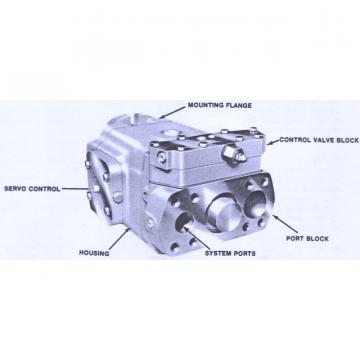 Dansion gold cup piston pump P30P-8L5E-9A4-A00-0B0
Dansion gold cup piston pump P30P-8L5E-9A4-A00-0B0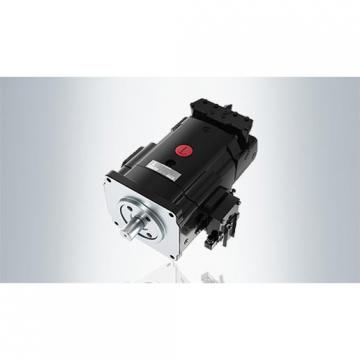 Dansion gold cup piston pump P30P-8L5E-9A2-B00-0C0
Dansion gold cup piston pump P30P-8L5E-9A2-B00-0C0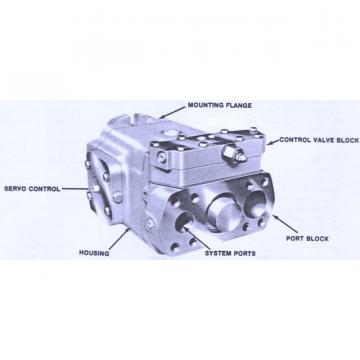 Dansion gold cup piston pump P30L-8L5E-9A7-A0X-B0
Dansion gold cup piston pump P30L-8L5E-9A7-A0X-B0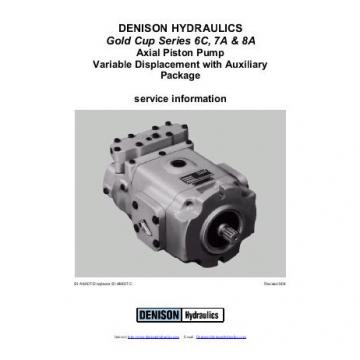 Dansion gold cup piston pump P30P-2R5E-9A7-B00-0C0
Dansion gold cup piston pump P30P-2R5E-9A7-B00-0C0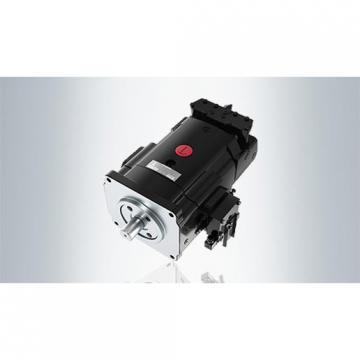 Dansion gold cup piston pump P30L-7R5E-9A2-A0X-D0
Dansion gold cup piston pump P30L-7R5E-9A2-A0X-D0